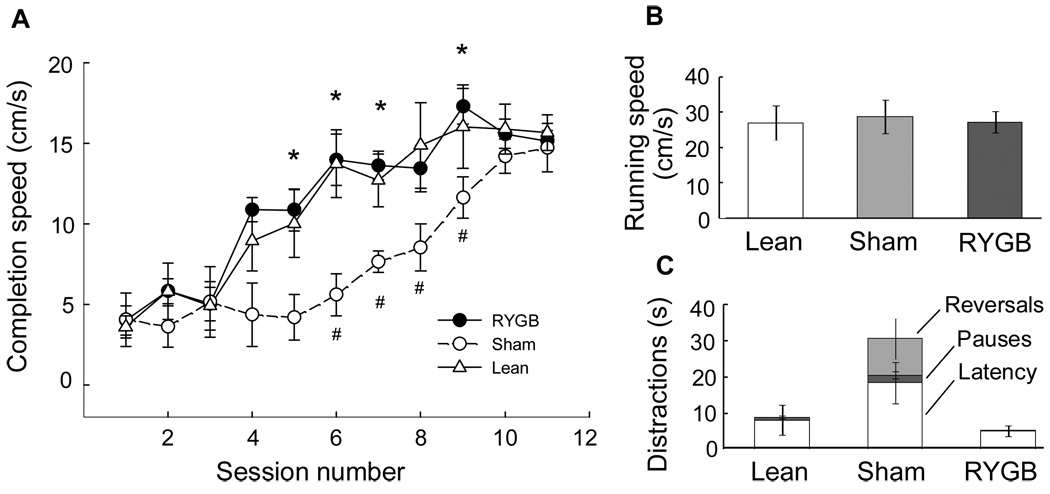Fig. 3.
Motivation to obtain food or ‘wanting’ as measured in the incentive runway. Rats were required to run from a start box to a goal box where they were rewarded with a palatable treat (sweet tasting Fruit-Loops). A: Completion speed (based on time required to go from start to goal box) for non-operated, chow-fed lean controls (lean, n = 4), sham-operated, obese (sham/obese, n = 6), and RYGB (n = 4) outbred Sprague-Dawley rats. Completion speed (‘wanting’) is significantly suppressed in obese rats with sham-surgery compared with both RYGB (* p < 0.05) and lean rats (# p < 0.05). B: Net running speed is not different for the three groups. C: Obese, sham-operated rats spend significantly more time being distracted by latency to leave the start box, pauses, and reversals.

